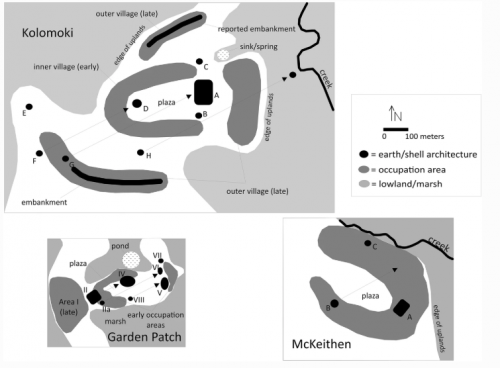
New article by Florida Archaeology curator Neill Wallis and collaborators Thomas Pluckhahn (USF) and Victor Thompson (UGA), tackling the concept of migration in Southeastern archaeology. They used Bayesian modelling on over 100 radiocarbon and thermoluminescence dates from Woodland civic ceremonial centers to track migrations to and from these places.
Check out the article in Journal of Archaeological Research here.
Pluckhahn, Thomas J., Neill J. Wallis, and Victor D. Thompson
In Press The History and Future of Migrationist Explanations in the Archaeology of the Eastern Woodlands with a Synthetic Model of Woodland Period Migrations on the Gulf Coast. Journal of Archaeological Research. DOI: https://doi.org/10.1007/s10814-019-09140-x.
Abstract:
Migration was embraced as a general phenomenon by cultural historical archaeologists in the Eastern Woodlands, subsequently rejected by processualists, and recently invoked again with greater frequency due to advances in both method and theory. However, challenges remain in regard to establishing temporal correlations between source and host regions and identifying the specific mechanisms of migration and their archaeological correlates. Bayesian modeling, in combination with insights from recent modeling of migration processes, supports the inference that migration was a causal factor for shifts in settlement observed in the archaeology of the Woodland period (ca. 1000 BC to AD 1050) cultures of the eastern Gulf Coast subregion.